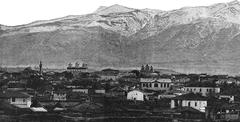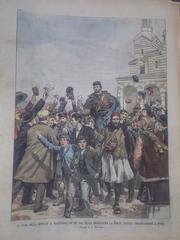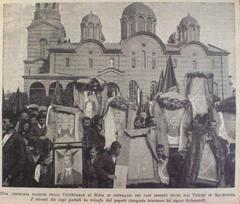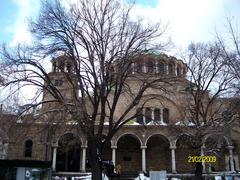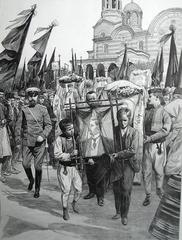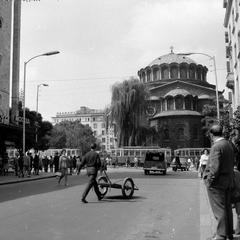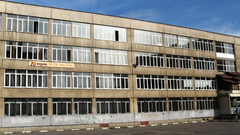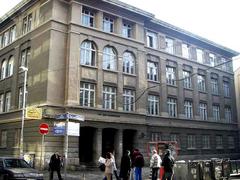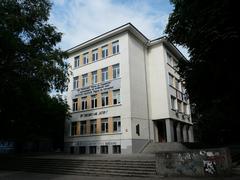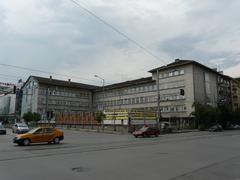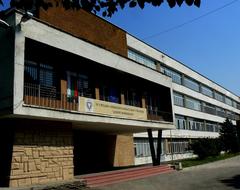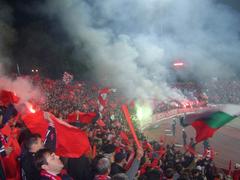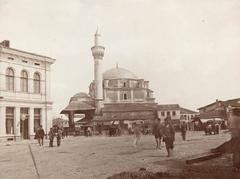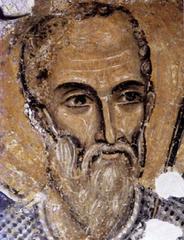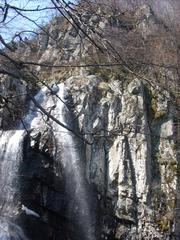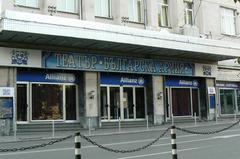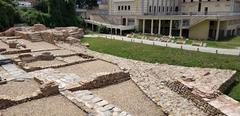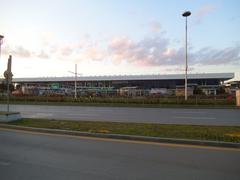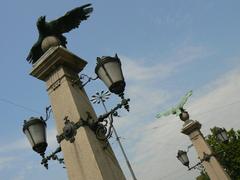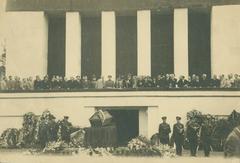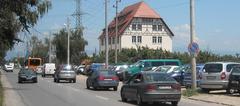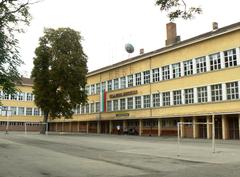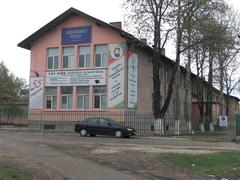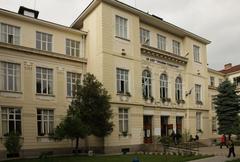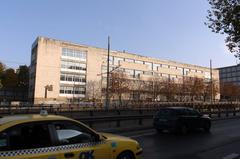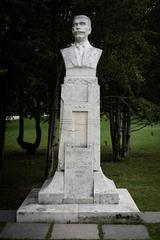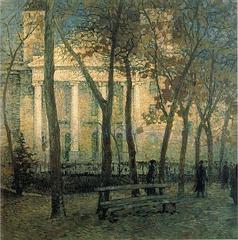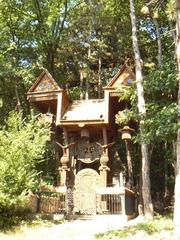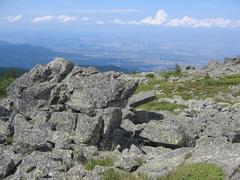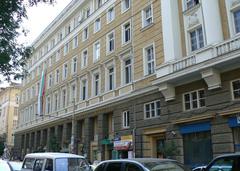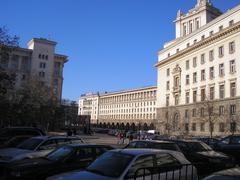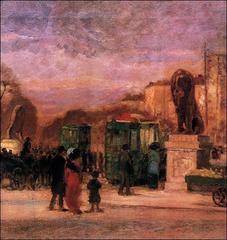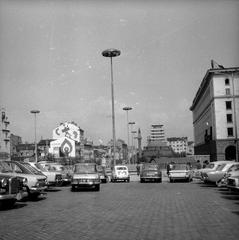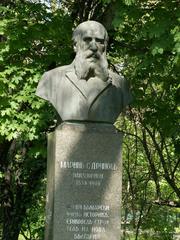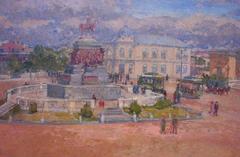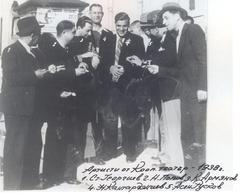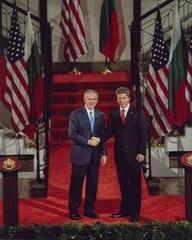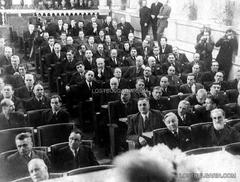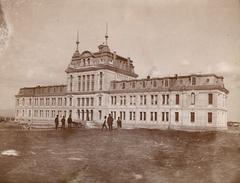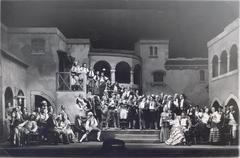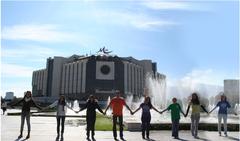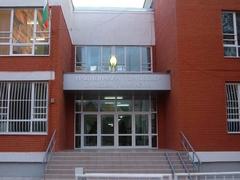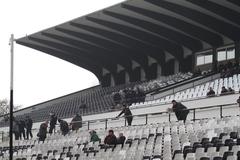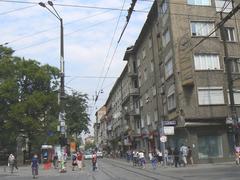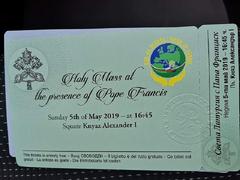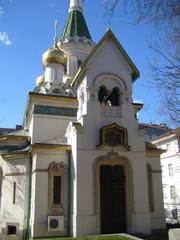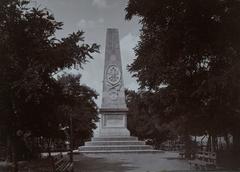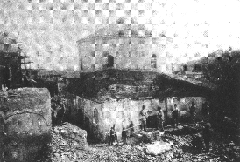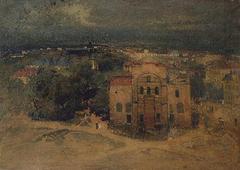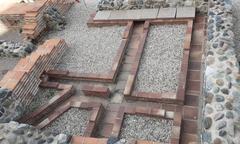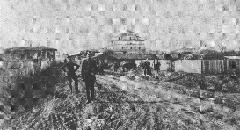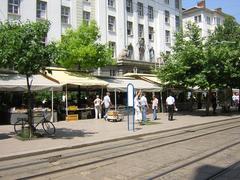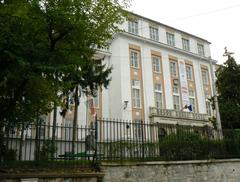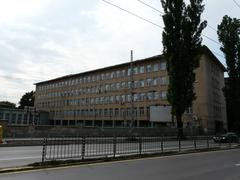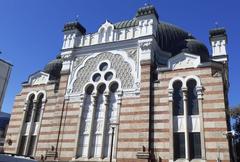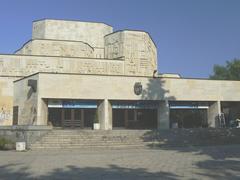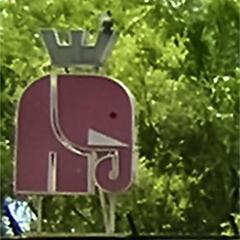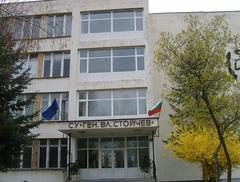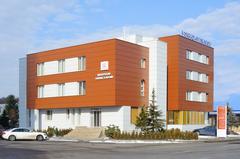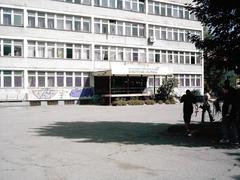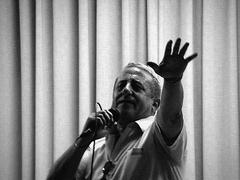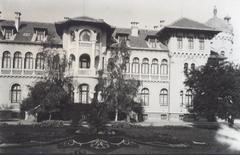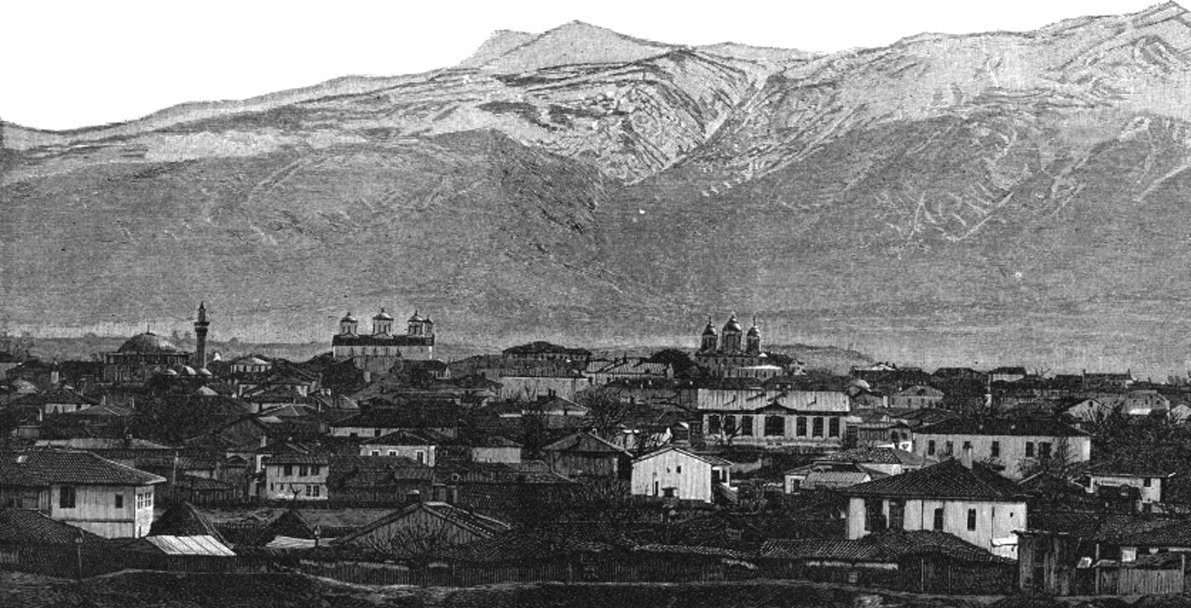
St Nedelya Church, Sofia, Bulgaria: Visiting Hours, Tickets, and Travel Guide
Date: 14/06/2025
Introduction
St Nedelya Church (Sveta Nedelya), located in the vibrant center of Sofia, Bulgaria, is an enduring symbol of the city’s religious, cultural, and historical identity. Also known as St. Kyriaki Cathedral, this Eastern Orthodox church has played a central role in Sofia’s spiritual life for over a millennium. Its remarkable Neo-Byzantine architecture, storied past, and prime location among Sofia’s top historical sites make it a must-visit for travelers interested in history, art, and Bulgarian heritage (bnr.bg, citysightseeing.bg, visit.sofia.bg).
This comprehensive guide offers an in-depth look at St Nedelya Church’s history, architecture, visiting hours, ticket and accessibility details, travel tips, and recommendations for a fulfilling visit.
Historical Overview
Origins and Medieval Development
St Nedelya Church’s roots stretch back to the early 4th century, predating Christianity’s establishment as the Roman Empire’s official religion (bnr.bg). Initially serving as a family chapel, it was rebuilt by the end of that century as a city church, making it one of Serdica’s (ancient Sofia) most important early Christian sites. Medieval records, particularly from the Asen Dynasty era, describe a growing church with a stone foundation and wooden superstructure—a design choice that distinguished it from other contemporary churches (en.wikipedia.org).
Relics of King Stefan Uroš II Milutin
A defining moment came in the 15th century, when the relics of Serbian King Stefan Uroš II Milutin were enshrined here, earning the church the nickname “Sveti Kral” (“Holy King”) (spottinghistory.com). These relics became—and remain—a major draw for pilgrims and visitors.
Destruction, Restoration, and Expansion
The church suffered repeated destruction, notably during the Ottoman suppression of the Chiprovtsi Uprising in 1688 (bnr.bg). Each time, local merchants and monks restored it, often retaining traditional wooden upper structures until the mid-1800s. Major reconstruction began in 1856, resulting in a larger stone edifice, consecrated in 1867. The addition of a new iconostasis, royal icons, and embellishments throughout the 19th and early 20th centuries reflected Sofia’s spiritual and civic revival (citysightseeing.bg).
The 1925 Bombing
On April 16, 1925, tragedy struck when a bomb detonated during a funeral service inside the church, killing over 150 people and injuring hundreds more in a politically motivated attack (memoryandconscience.eu). This event left the church in ruins but galvanized the community to rebuild. The current Neo-Byzantine structure was completed in 1933, preserving the church’s medieval spirit while incorporating modern engineering (KaliTravel).
Architectural Features
Exterior
St Nedelya’s Neo-Byzantine design features a commanding central dome, robust stone walls, and arched windows. The 31-meter-high dome and bell tower (with bells from Bulgaria, Serbia, and Russia) are visible from across the city, especially from Vitosha Boulevard (bg-guide.org, travelshelper.com). Restoration efforts in 2000 included cleaning the façade and glazing the north colonnade to protect against the elements.
Interior
The church’s interior is spacious and awe-inspiring, dominated by the grand central dome and an ornate, gold-leaf iconostasis—one of the few elements to survive the 1925 bombing. Murals painted in the 1970s by Nikolay Rostovtsev’s team depict scenes from the lives of Christ, the Virgin Mary, and the saints. The acoustics, enhanced by the dome, contribute to the powerful atmosphere during services (bg-guide.org, travelshelper.com).
Relics and Artistic Treasures
The relics of King Stefan Uroš II Milutin are displayed on major feast days, while the church’s iconostasis, choir stalls, and lecterns show masterful craftsmanship. The symbolism of the dome and iconostasis reflects Orthodox theology, with the dome representing the heavens and gold elements conveying divine glory (travelshelper.com).
Spiritual and Cultural Significance
Dedication and Symbolism
St Nedelya is dedicated to St. Kyriaki (Nedelya), a third-century Christian martyr whose name means “Sunday” or “the Lord’s Day” (visit.sofia.bg, freesofiatour.com). This dual dedication imbues the church with deep spiritual meaning for both worshippers and visitors.
Role in Bulgarian Orthodoxy
As the cathedral of the Sofia bishopric, St Nedelya is at the heart of Bulgaria’s Orthodox Christian community, hosting daily liturgies, major feasts, and significant ceremonies (whichmuseum.com). Its art, relics, and national symbolism make it a focal point for religious and civic life.
National Significance
The church’s repeated destruction and reconstruction, especially after the 1925 bombing, embody the resilience of Sofia and Bulgaria as a whole. Memorial plaques inside honor the bombing’s victims, serving as a poignant reminder of the nation’s turbulent history (memoryandconscience.eu, visit.sofia.bg).
Visitor Information
Visiting Hours
- Standard Hours: Daily, 8:00 AM – 6:00 PM (some sources state 7:00 PM; hours may vary on religious holidays—check in advance).
- Services: Regular liturgies are open to all; visitors are welcome but should be respectful during services.
Tickets and Admission
- Entry: Free for all visitors.
- Photography Fee: A 5 BGN (approx. €2.50) fee may apply for photography in some cases.
- Donations: Appreciated for maintenance and charitable activities.
Accessibility
- Wheelchair Access: Ramps at the main entrance; interior is generally accessible, though some areas may have steps or uneven flooring (Private Guide Bulgaria).
- Assistance: Available upon request.
Dress Code and Etiquette
- Modest attire required (shoulders and knees covered).
- Remove hats before entering.
- Maintain silence and respect during services.
- Photography is allowed (without flash); always be considerate of worshippers.
Guided Tours
- Daily guided tours at 10:00 AM and 3:00 PM (book in advance via local operators or the official website).
- Audio guides are available via the Audiala app, offering in-depth historical and cultural context.
Special Events
- Major Orthodox holidays (Easter, Christmas) feature special services and cultural programs. Arrive early for seating.
Location and Nearby Attractions
- Address: 20 St. Nedelya Square, Sofia.
- Transport: Easily accessible via metro (Serdika station), tram, and bus.
- Nearby Sights: Alexander Nevsky Cathedral, St. George Rotunda, National Archaeological Museum, Banya Bashi Mosque, Sofia Synagogue.
The church’s central location makes it a perfect starting point for a walking tour of Sofia’s religious and historical landmarks (KaliTravel).
Highlights and Notable Features
- Iconostasis & Frescoes: Masterpieces of Bulgarian ecclesiastical art, with gilded icons and vivid biblical murals.
- Relics of King Stefan Uroš II Milutin: Housed within the church and venerated on feast days.
- Central Dome & Acoustics: The dome’s design enhances choral music during services.
- Memorial Plaques: Honoring victims of the 1925 bombing.
Practical Tips for Visitors
- Visit early to avoid crowds, especially on weekends and holidays.
- Combine your visit with other nearby historical sites for a richer experience.
- Dress appropriately and respect Orthodox customs.
- English-speaking guides and informational brochures are available.
- Public amenities, cafés, and shops are plentiful around St Nedelya Square.
Frequently Asked Questions (FAQ)
What are the visiting hours for St Nedelya Church?
Open daily from 8:00 AM to 6:00 PM (may vary on holidays).
Is there an entrance fee?
No—entry is free; donations and a small photography fee may apply.
Are guided tours available?
Yes, daily tours and audio guides are available.
Is the church accessible for visitors with disabilities?
Yes, with ramps and assistance available.
Can I take photos inside?
Yes, but avoid flash and pay any applicable fee. Be respectful of worshippers.
What other attractions are nearby?
Alexander Nevsky Cathedral, St. George Rotunda, National Archaeological Museum, and more.
Events and Community Life
St Nedelya Church remains a vibrant center of worship and community, hosting regular liturgical services, weddings, baptisms, and major Orthodox festivals. Visitors are welcome to attend and participate in its rich traditions.
Summary and Recommendations
St Nedelya Church stands as a powerful symbol of Sofia’s resilience, faith, and artistry. Its Neo-Byzantine architecture, treasured relics, and poignant memorials offer a multi-layered experience—whether you seek spiritual enrichment, historical insight, or architectural beauty. Plan your visit with the information above for a memorable and meaningful encounter with one of Bulgaria’s most important landmarks (bnr.bg, memoryandconscience.eu, bg-guide.org, KaliTravel).
Visuals


Sources
- St Nedelya Church Pearl of Religion Downtown Sofia, 2023, Bulgarian National Radio (bnr.bg)
- St Nedelya Church, City Sightseeing Sofia, 2023 (citysightseeing.bg)
- St Nedelya Church, Wikipedia, 2023 (en.wikipedia.org)
- St Nedelya Church History and Significance, Spotting History, 2023 (spottinghistory.com)
- 100th Anniversary of St Nedelya Church Assault, Memory and Conscience, 2025 (memoryandconscience.eu)
- St Nedelya Church Sofia Visitor Guide, KaliTravel, 2024 (KaliTravel)
- St Nedelya Church Cathedral, BG Guide, 2023 (bg-guide.org)
- Cathedral Church Sveta Nedelya, TravelsHelper, 2023 (travelshelper.com)
- Sveta Nedelya Church Overview, Visit Sofia, 2023 (visit.sofia.bg)
- St Nedelya Church Sofia Itinerary, Private Guide Bulgaria, 2024 (Private Guide Bulgaria)
For the latest updates, download the Audiala app and follow our social media channels for Sofia travel tips and exclusive content.
